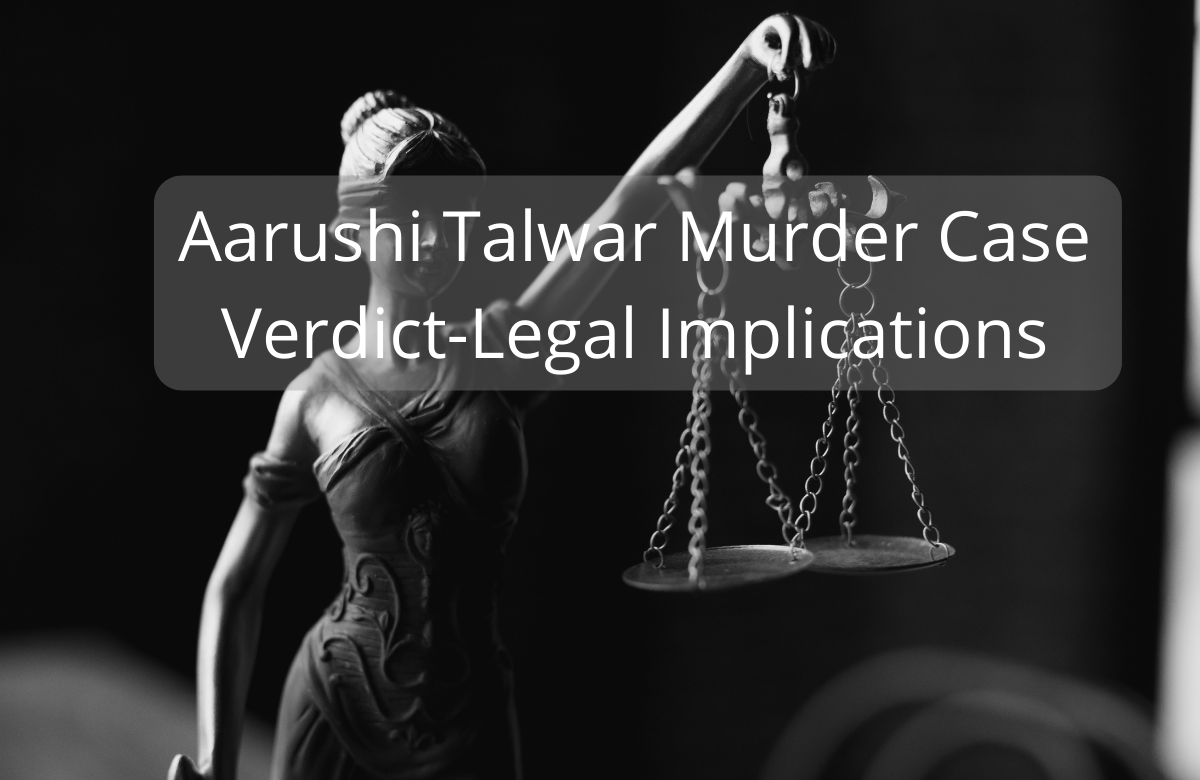The topic is about an important case what is the mystery behind the case of Aarushi Talwar? I will explain it in detail with the explanation of what and when happened? Then we will see the report and analysis of this case and then will explain what is the Allahabad Court Judgement about this case.
The Timeline of the Aarushi Talwar Case.
May 16, 2008
• morning of May 16, 2008, 14 – year – old Aarushi Talwar was found dead in the bedroom of her house in Jalvayu Vihar, Noida.
• Her throat was slit and her head bludgeoned.
• The family’s live-in domestic help Hemraj Banjade was seen as the prime suspect in the murder, but, a day later, Hemraj ( 45 ) was found dead on the terrace of the same flat. His throat was also slit and he had suffered injuries to his head.
May 23, 2008
On 23 May 2008, Rajesh Talwar was arrested for the double murder but released after inconclusive evidence.
2010
• CBI submitted a closure report on the grounds of ” insufficient evidence.
• Giving a clean chit to the servants, CBI named Rajesh Talwar as the prime suspect.
• However, due to lack of evidence, CBI did not charge him.
• The court said the case could not be closed.
2013
• CBI judge Shyam Lal convicted the Talwars guilty of both murders and destruction of evidence.
• “The parents are the best protector of their own children and that is the order of human nature, but they have been treaks in the history of mankind when the father and mother became the killer of their own progeny,” – CBI Judge.
• CBI court awarded life imprisonment to the Talwar.
Evidence Act
Section 106 of the Evidence Act says that – “when any fact is especially within the knowledge of any person, the burden of proving that fact is upon him.
• ” Section 114 – a court is entitled to “presumption of certain facts” based on certain reasonable human conduct.
• Since the Talwars were the only people in the house when Aarushi and their domestic help Hemraj were killed, they had to furnish satisfactory explanations to diseñarge their burden of proof.
• This provision was resorted to by the CBI court to hold that there could be a presumption against the parents that they would have been in the knowledge of what was happening inside the house when there were no signs of forced entry by a third person nor was such a case built up by the defense.
Reference of Past Cases for the Aarushi Talwar cases
State of Rajasthan vs Thakur Singh, 2005
• The apex court had held that
• ” the law, therefore, is quite well settled that the burden of proving the guilt of an accused is on the prosecution but there may be certain facts pertaining to a crime that can be known only to the accused, or are virtually impossible for the prosecution to prove. These facts need to be explained by the accused and if he does not do so, then it is a strong circumstance pointing to his guilt based on those facts.
”
Shambhu Nath Mehra vs State of Ajmer , 1956
• The Supreme Court dealt with the interpretation of Section 106 of the Evidence Act and held that –
• “the section is not intended to shift the burden of proof ( in respect of a crime ) on the accused but to take care of a situation where a fact is known only to the accused and it is well – nigh impossible or extremely difficult for the prosecution to prove that fact.
”
Gian Chand vs State of Haryana, 2013
• The apex court ruled that this provision –
• “is not intended to relieve the prosecution of its burden to prove the guilt of the accused beyond reasonable doubt”
Interpretation of the Section
The court said that the section would apply to cases where the prosecution has :
- succeeded in proving facts from which a
- reasonable inference can be drawn
- regarding the existence of certain other facts,
• unless the accused by virtue of his special knowledge regarding such facts, failed to offer any explanation which might drive the court to draw a different inference.
Section 106, Evidence Act
• Section 106 of the Evidence Act is designed to meet certain exceptional cases, in which, it would be impossible for the prosecution to establish certain facts which are particularly within the knowledge of the accused.
• The presumption in law of their guilt was so strong that it could relieve the prosecution from its duty of proving the guilt beyond a reasonable doubt, and that Talwars failed to discharge their duty to explain.
What happened in 2017 in Aarushi Talwar Case
• Allahabad HC bench comprising Justices BK Narayana and AK Mishra reserved judgment against parents’ plea and fixed October 12 as the date of verdict.
Vikram Singh, the detective words/opinion about of Aarushi Talwar murder Case-
-
Allahabad High Court will acquit Talwar.
-
The Couple’s lawyers said that they are expected to be out of Dasna jail.
-
“Based on what I have investigated & the way I have seen this case according to that somewhere I believe them to be the culprit. My stand on the judicial facts would be the same as before. I really find them guilty of doing this as an investigator and even the police or anyone who has been connected with the case would say the same.
• Allahabad HC to deliver its verdict against Aarushi – Hemraj double murder case.
•
Allahabad HC bench comprising Justices BK Narayana and AK Mishra reserved judgment against parents’ plea and fixed October 12 as the date of verdict. Allahabad HC to deliver its verdict against Aarushi – Hemraj double murder case.
Reason 1 for giving acquittal
• The verdict is primarily based upon
” one central principle of law –the burden of proof cannot be on accused.
Reason 2 for giving acquittal
“In a case based on
- circumstantial evidence and
- without a clear-cut motive,
one shred of doubt is capable of getting an acquittal in law. It can be a big reason for the acquittal in law.
The following questions are still remained in this case after acquittal and after judgment.
Did no one kill Arushi? If Yes, then who killed Arushi?



























